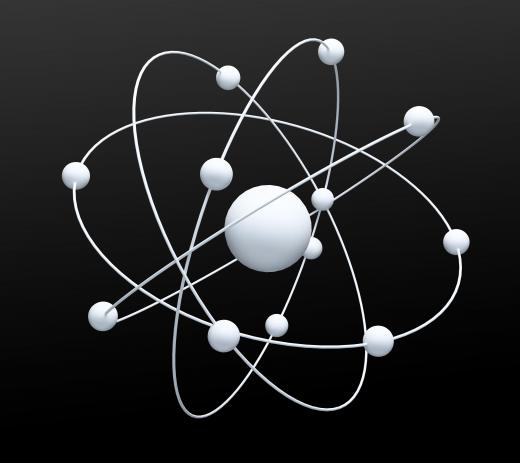One of the most fundamental driving forces of chemical reactions is the electron bonds formed between atoms. Electrons are negatively-charged particles that orbit the nucleus of an atom in shells. Each electron shell of an atom has a set number of electrons that it retains when possible even if it unbalances the net charge of the atom; electrons and protons have the same amount of electrical charge individually. The amount of charge a given atom has is expressed as a superscript to the right of the element name; for example, Na1+. The superscript number and sign is known as the charge number.
The outer electron shell of an atom is called the valence shell, and is the basis of chemical reactions. Each shell has a varying number of electrons: the innermost shell contains two electrons, the next one contains eight, and subsequent ones contain 18. The charge number comes from the natural tendencies of atoms to have a full valence shell, whether it involves gaining or losing electrons. Elements are arranged in the periodic table in groups according to the number of electrons in their valence shells. If two elements are in the same column, or group, on the periodic table, they have the same number of electrons available for chemical reactions.

With the exception of hydrogen, elements on the left-hand side of the table — groups I and II — are alkali metals and alkaline earth metals. They have valence shells that are virtually empty, with only one or two electrons respectively. Groups III through VII are nonmetals. Group III has three electrons, group IV has 4 and so on. The noble gases such as neon, radon, and xenon have full valence shells and therefore do not react with other elements.

The charge number determines what type of charge an individual atom will have if it gains or loses electrons during an ionic chemical reaction. For example, sodium loses one electron when it reacts with chlorine; chlorine gains one electron. Their respective charges are 1+ and 1-. In their natural state, all elements have a charge number of zero because there is no gain or loss of electrons.

Transition elements in columns 3 through 12 of the periodic table can bond with different elements. Therefore, their charge numbers will vary. Group IV elements, such as carbon, have a charge number of 4+/4-. They tend to form covalent bonds with other atoms, in which electrons are shared rather than transferred.
